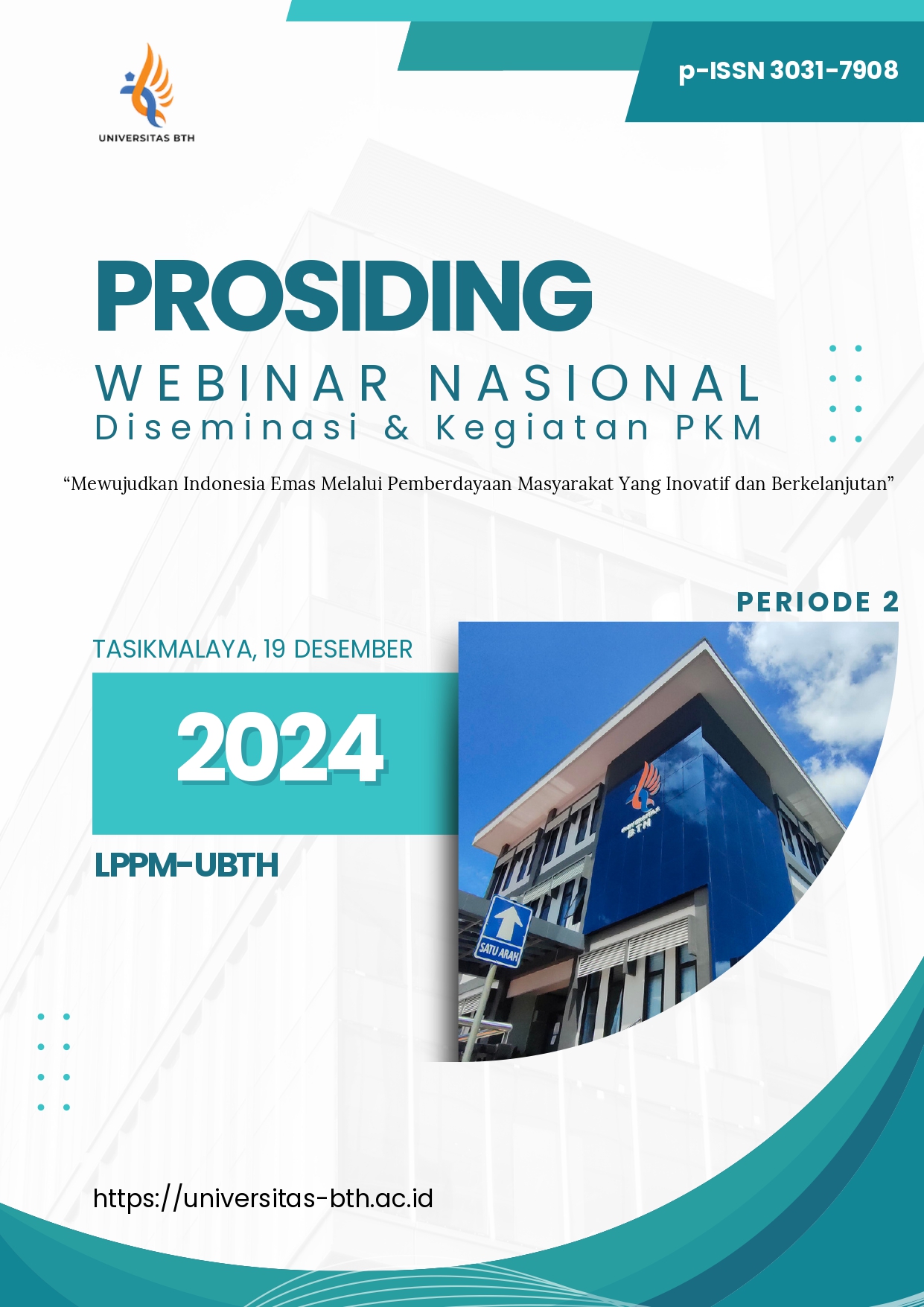PENYULUHAN BUDIDAYA JAMUR PAHA AYAM (COPRINUS COMATUS) SECARA TERPADU
Keywords:
coprinus comatus, mushroom cultivation, training, local organic materials, community empowermentAbstract
Chicken thigh mushroom (Coprinus comatus) is a healthy food source with high nutritional value. This extension activity aims to improve participants' understanding and skills in cultivating mushrooms based on local organic materials. This
community service is aimed at increasing knowledge about integrated chicken thigh mushroom cultivation, with the main target participants from various regions of Indonesia through an online platform. This activity is carried out using
an interactive presentation method, as well as discussions to improve participants' understanding. The material presented includes an introduction to chicken thigh mushrooms, preparation of planting media, inoculation techniques,
maintenance, post-harvest processing, and marketing strategies for harvested products. Participants are invited to attend activities in community service seminars and mushroom cultivation training activities. The number of
participants who attended the online participants was 74 people who attended the seminar. The results of the activity showed high enthusiasm from the participants, as seen from the active discussion and participation in the practice of
preparing planting media. Support from previous trial results gave participants confidence to implement this mushroom cultivation independently.
References
Badalyan, C. M., Gasparyan, A. V, & Garibyan, N. G. (2003). Investigation of the antioxidant activity of some basidial macromycetes. Mikol Fitopatol, 37, 63–68.
Baldeón, M. E., Castro, J., Villacrés, E., Narváez, L., & Fornasini, M. (2012). Efecto hipoglicemiante de lupinus mutabilis cocinado y sus alcaloides en sujetos con diabetes tipo-2. Nutricion Hospitalaria, 27(4), 1261–1266. https://doi.org/10.3305/nh.2012.27.4.5761
Gulati, V., Dass Singh, M., & Gulati, P. (2019). Role of mushrooms in gestational diabetes mellitus. AIMS Medical Science, 6(1), 49–66. https://doi.org/10.3934/medsci.2019.1.49
Hwang, H.-J., Kim, S.-W., Lim, J.-M., Joo, J.-H., Kim, H.-O., Kim, H.-M., & Yun, J.-W. (2005).
Hypoglycemic effect of crude exopolysaccharides produced by a medicinal mushroom Phellinus baumii in streptozotocin-induced diabetic rats. Life Sciences, 76(26), 3069–3080.
https://doi.org/https://doi.org/10.1016/j.lfs.2004.12.019
Khusnul khusnul. (2022). Training and Feasibility Study of Oyster Mushroom Cultivation at Ganda Mandiri Farmer Group in Sukamanah Village, Ciamis Regency. Jurnal Pengabdian Kepada Masyarakat (Indonesian Journal of Community Engagement), 8(2), 102. https://doi.org/10.22146/jpkm.50748
Li, B., Lu, F., Suo, X., Nan, H., & Li, B. (2010). Antioxidant properties of cap and stipe from Coprinus comatus. Molecules, 15(3), 1473–1486. https://doi.org/10.3390/molecules15031473
Liu, Y. F., & Zhang, J. S. (2003). Recent advances in the study on the medicinal functions of Coprinus comatus. Acta Edible Fungi. Acta Edible Fungi, 10, 60–63.
Luo, X. Y., Lu, D. P., & Wang, W. (1991). Artifical culture of Coprinus comatus Kunyan C-901. Edible Fungi of China, 10, 13–15.
Miles, P. G., & Chang, S.-T. (2004). Mushrooms: Cultivation, Nutritional Value, Medicinal Effect, and Environmental Impact (2nd ed.). CRC Press. https://doi.org/https://doi.org/10.1201/9780203492086
Myoung-Jun Jang, Yun-Hae Lee, Jun-Jie Liu, & Young-Cheol Ju. (2009). Optimal Conditions for the Mycelial Growth of Coprinus comatus Strains. Microbiology, 37(2), 103–108.
Park, W. H., & Lee, H. D. (2005). Wild fungi of Korea. Publishing Co.
Ratnaningtyas, N. I., Hernayanti, Ekowati, N., Sukmawati, D., & Widianti, H. (2019). Chicken drumstick mushroom (Coprinus comatus) ethanol extract exerts a hypoglycaemic effect in the Rattus norvegicus model of diabetes. Biocatalysis and Agricultural Biotechnology, 19, 101050. https://doi.org/https://doi.org/10.1016/j.bcab.2019.101050
Ratnaningtyas, N. I., Hernayanti, H., Ekowati, N., & Husen, F. (2022). Ethanol extract of the mushroom Coprinus comatus exhibits antidiabetic and antioxidant activities in streptozotocin-induced diabetic rats. Pharmaceutical Biology, 60(1), 1126–1136. https://doi.org/10.1080/13880209.2022.2074054
Yamaç, M., Zeytinoglu, M., Kanbak, G., Bayramoglu, G., & Senturk, H. (2009). Hypoglycemic effect of crude exopolysaccharides produced by Cerrena unicolor, Coprinus comatus, and Lenzites betulina isolates in streptozotocin- induced diabetic rats. Pharmaceutical Biology, 47(2), 168–174. https://doi.org/10.1080/13880200802436950
Yang, X., Wan, M., Mi, K., Feng, H., Chan, D. K. O., & Yang, Q. (2003). The quantification of (1 → 3)-β-glucan in edible and medicinal mushroom polysaccarides by using limulus G test. Mycosystema, 22, 296–302.

